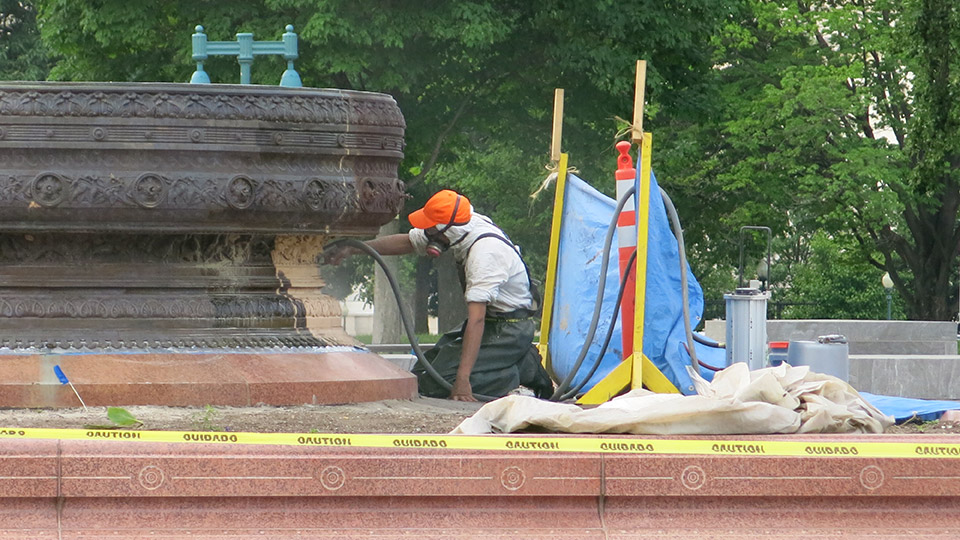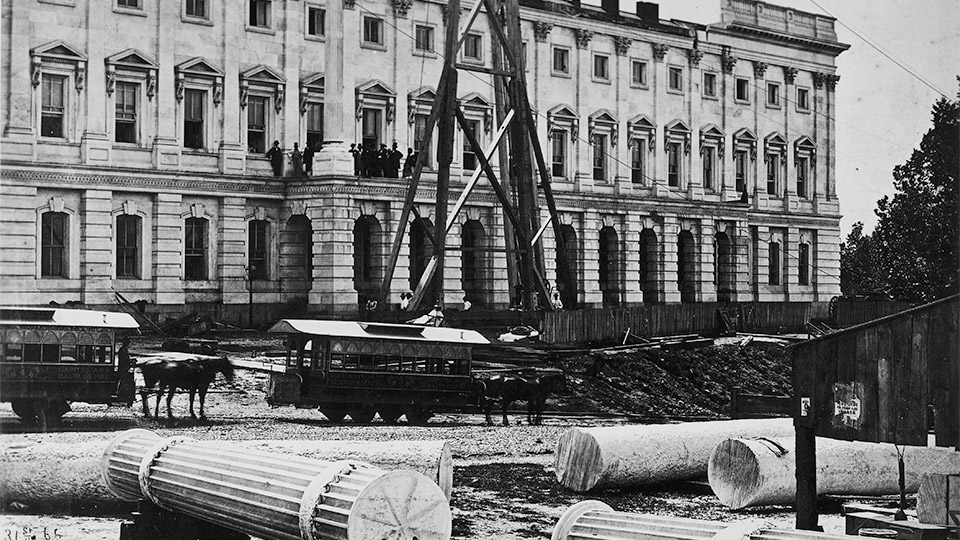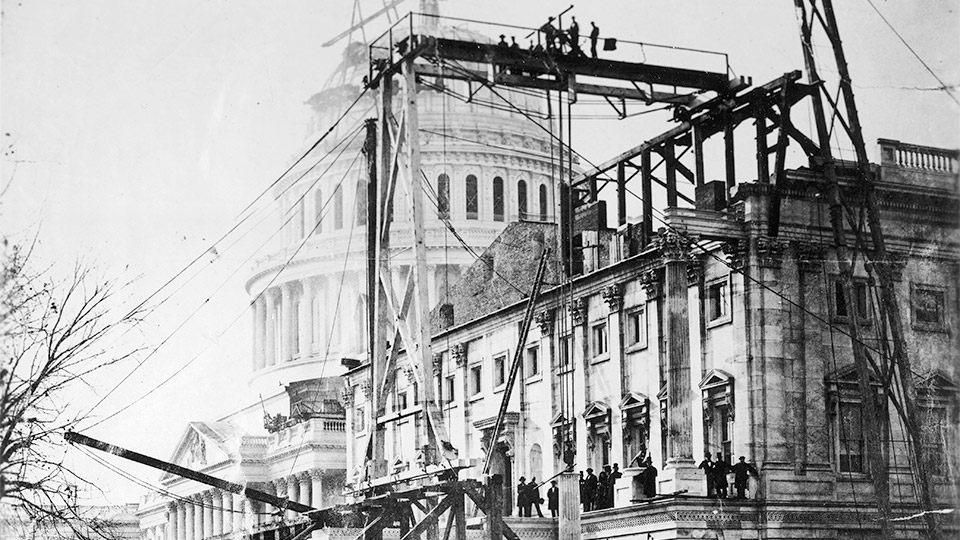
A bronze fountain on the East Plaza is cleaned and coated to restore the original brown statuary finish.

Shown is the east front of the Capitol Building, Senate Extension, before construction of the portico, with the cast iron dome under construction. c.1863.

Shown is the north elevation of the Senate Extension with the balcony under construction. In the foreground are rough-turned column shafts and the finished fluted column shafts. The rough turning was done at the quarry, and all finished carving was done on site. c.1863.

Shown is the east elevation of the Senate Extension, a column shaft is being hoisted into place. The scaffold, gantry and derricks designed to hoist and move the large pieces of stone are engineering marvels. Note the last of safety requirements — lots of people watching under the rigging and no hard hats or no overhead protection! c.1864.